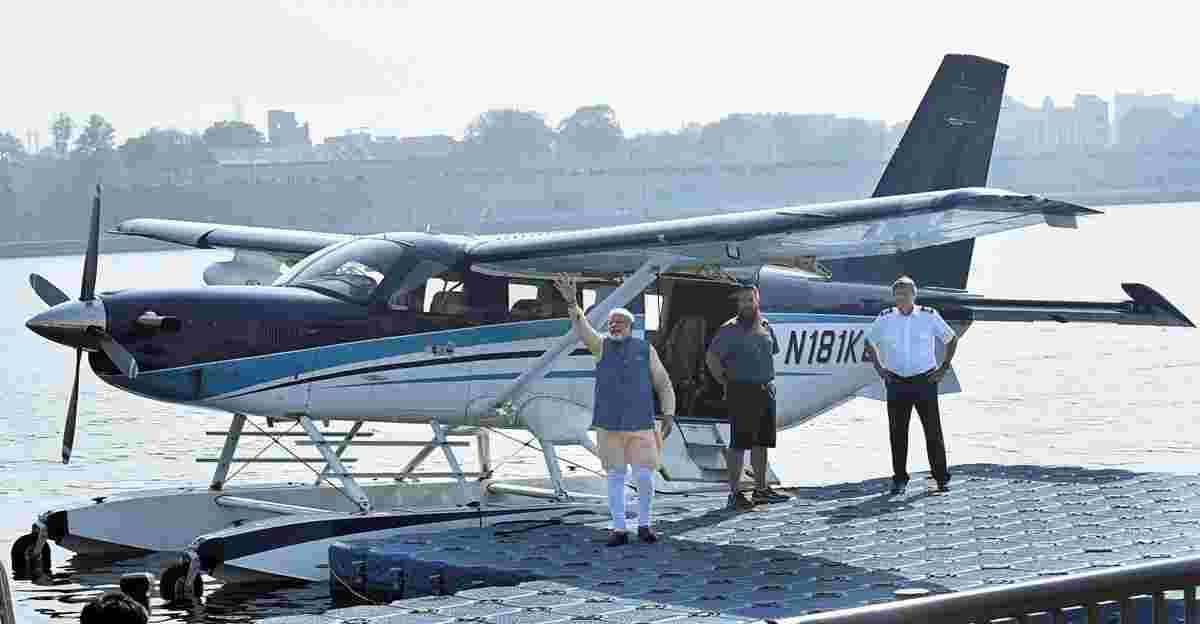In the realm of global diplomacy, the actions and gestures of world leaders often carry profound implications. Such nuances were recently highlighted during Indian Prime Minister Narendra Modi’s official visit to South Africa. The media frenzy that ensued was triggered by a seemingly small yet significant detail – his decision to remain on the aircraft upon arrival, as opposed to stepping onto the welcoming turf. This contrasted sharply with the grand reception accorded to Chinese President Xi Jinping during his visit to India. In this article, we delve into the intriguing dynamics of this diplomatic incident, analyzing the reasons behind PM Modi’s choice and its broader implications for India’s foreign relations.
The Arrival Scene: A Tale of Two Welcomes
As the world watched, two Asian leaders embarked on diplomatic journeys that captured global attention. Narendra Modi, the Prime Minister of India, and Xi Jinping, the President of China, ventured into international visits with distinct styles of reception. The contrasting receptions they received became emblematic of their nations’ diplomatic approaches.
In India, President Xi Jinping’s visit saw an elaborate welcome ceremony, complete with a guard of honor, red carpet, and ceremonial rituals. The Indian President and Prime Minister were present to welcome him, signifying the importance accorded to the visit. The optics portrayed warmth, respect, and diplomatic camaraderie.
On the flip side, PM Modi’s arrival in South Africa presented a different narrative. Choosing to stay on the aircraft, he sent a signal that defied the traditional protocol of a grand welcome. This move was all the more conspicuous when compared to the treatment offered to President Xi Jinping. It led to speculation and discussion, with media and analysts attempting to decipher the underlying motivations behind the Indian Prime Minister’s decision.
Decoding Modi’s Decision: Diplomacy in Action
Behind every diplomatic action lies a strategy, often shaped by geopolitical considerations, international dynamics, and the leaders’ own inclinations. PM Modi’s choice to remain on the plane can be analyzed through various lenses:
1. A Humble Gesture:
Some experts argue that PM Modi’s decision to stay on the aircraft could be a deliberate effort to showcase humility. By refraining from a grand reception, he might have intended to emphasize the importance of the visit’s agenda over the pomp and show of formalities.
2. Focusing on Substance:
Another perspective suggests that this move aligns with Modi’s approach of prioritizing substantive discussions over symbolic gestures. His emphasis on concrete outcomes rather than superficial optics may have influenced this decision.
3. Respecting Host Nation:
Additionally, Modi’s choice to adapt to the host nation’s protocols demonstrates a certain level of cultural respect. This flexible approach can foster goodwill and stronger ties between nations.
Comparative Diplomacy: India and China
To understand the implications of PM Modi’s decision, it’s essential to compare and contrast the diplomatic approaches of India and China:
China’s Opulent Diplomacy:
China’s diplomatic style often leans toward grandeur and symbolism. President Xi Jinping’s reception in India was a testament to this. Such displays of extravagance are designed to convey a sense of China’s global stature and leadership.
India’s Pragmatic Diplomacy:
India, on the other hand, has exhibited a more pragmatic and outcome-oriented approach under PM Modi’s leadership. This is reflected in his prioritization of strategic partnerships, economic ties, and regional cooperation over elaborate ceremonies.
Implications for Foreign Relations
PM Modi’s decision to forego a lavish reception carries broader implications for India’s foreign relations:
1. Fostering Authentic Connections:
By focusing on meaningful engagements rather than surface-level displays, India can foster genuine connections with its partners. This approach may lead to deeper collaboration on issues of mutual interest.
2. Strengthening Bilateral Ties:
Emphasizing the substance of diplomatic visits can contribute to stronger bilateral relationships. When nations see tangible benefits from engagements, their willingness to cooperate increases.
3. Navigating Geopolitical Challenges:
In an increasingly complex global landscape, diplomatic actions are closely scrutinized. Modi’s pragmatic approach helps India navigate challenges without getting bogged down by unnecessary pomp.
Conclusion
In the realm of diplomacy, actions often speak louder than words. PM Modi’s decision to remain on the aircraft during his South African visit underscores India’s pragmatic and results-oriented approach to international relations. By focusing on the substance of engagements and meaningful collaborations, India aims to build stronger partnerships that transcend mere symbolic gestures. In a world where optics and diplomacy interplay, this choice holds the potential to redefine diplomatic norms and carve a distinctive path for India on the global stage.
